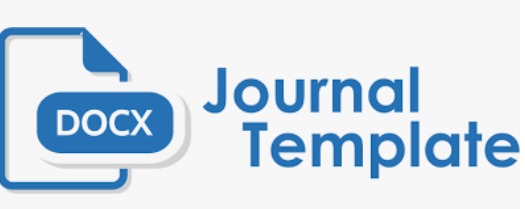Analysis of the Science Literacy Competency Profile of High School Students on Limited Energy Sources
DOI:
https://doi.org/10.29408/kpj.v7i3.23212Keywords:
Students' profile, scientific literacy, limited energy sourcesAbstract
Learning in the 21st century requires students to have the ability to face the times. One of the essential skills that must be possessed is scientific literacy. Scientific literacy is using scientific knowledge to identify questions, acquire new knowledge, explain scientific phenomena, and draw conclusions based on scientific evidence. This research aims to describe the scientific literacy profile of high school students in the subject matter of limited energy sources. Three competency indicators refer to PISA 2018: a) Explaining phenomena scientifically, b) Evaluating and designing scientific investigations, and c) Interpreting data and evidence scientifically. This research uses a quantitative approach with a descriptive analysis method. The study was conducted in June 2023 in the Even Semester of the 2022/2023 Academic Year at a public high school in Surabaya. The population in this study was 60 students. The instrument used is a scientific literacy test developed with a valid category and a reliability value of 0.811. The results of this study were that students' scientific literacy competency profiles were obtained at 37% low, 33% sufficient, 18% high, and 12% very high. As for the results of the percentage of students' scientific literacy abilities based on scientific literacy competencies, the highest category in the first competency of 63%, namely explaining phenomena scientifically, while the second competency of 62%, namely evaluating and designing scientific investigations obtains a lower percentage than the first competence, and 56%, namely interpreting data and evidence scientifically, has the lowest result among the three scientific literacy competencies.References
Afina, D. R., Hayati, M. N., & Fatkhurrohman, M. A. (2021). Profil Capaian Kompetensi Literasi Sains Siswa SMP Negeri Kota Tegal Menggunakan PISA. PSEJ (Pancasakti Science Education Journal), 6(1), 10–21.
Adawiyah, R., Wisudawati, A. W. (2017). Pengembangan Instrumen Tes Berbasis Literasi Sains : Menilai Pemahaman Fenomena Ilmiah Mengenai Energi. Indonesian Journal of Curriculum and Educational Technology Studies, 5(2), 112-121.
Apriyani, N., Ariani, T., & Arini, W. (2020). Pengembangan Modul Fisika Berbasis Discovery Learning pada Materi Fluida Statis Siswa Kelas XI SMA Negeri 1 Lubuklinggau Tahun Pelajaran 2019/2020. Silampari Jurnal Pendidikan Ilmu Fisika, 2(1), 41–54.
Arikunto, S. (2015). Dasar-Dasar Evaluasi Pendidikan. Jakarta: Bumi Aksara.
Bagasta, A. R., Rahmawati, D., M, D. M. F. Y., Wahyuni, I. P., & Prayitno, B. A. (2018). Profil Kemampuan Literasi Sains Peserta Didik di Salah Satu SMA Negeri Kota Sragen. Pedagogia : Jurnal Pendidikan, 7(2), 121–129.
Diana, S., Rachmatulloh, A., & Rahmawati, E. S. (2015). Profil Kemampuan Literasi Sains Siswa SMA Berdasarkan Instrumen Scientific Literacy Assessments ( SLA ) High School Students' Scientific Literacy Profile Based on Scientific Literacy Assessments ( SLA ) Instruments. 285–291.
Fitriani, W., Hairida, & Lestari, I. (2014). Deskripsi Literasi Sains Siswa Dalam Model Inkuiri Pada Materi Laju Reaksi Di Sman 9 Pontianak. Jurnal Pendidikan Dan Pembelajaran, 3 (1), 12.
Hidayah, N., Rusilowati, A., & Masturi, M. (2019). Analisis Profil Kemampuan Literasi Sains Siswa SMP/Mts Di Kabupaten Pati. Phenomenon : Jurnal Pendidikan MIPA, 9(1), 36–47.
Huryah, F., Sumarmin, R., & Effendi, J. (2017). Analisis Capaian Literasi Sains Biologi Siswa SMA Kelas X Di Kota Padang. Jurnal Eksakta Pendidikan (Jep), 1(2), 72–79.
Jufrida, J., Basuki, F. R., Kurniawan, W., Pangestu, M. D., & Fitaloka, O. (2019). Scientific literacy and science learning achievement at junior high school. International Journal of Evaluation and Research in Education, 8(4), 630–636.
Mawardini, A., Permanasari, A., & Sanjaya, Y. (2015). Profil Literasi Sains Siswa SMP Pada Pembelajaran IPA Terpadu Tema Pencemaran Lingkungan. SNF2015-IV-49 SNF2015-IV-50. IV(1996), 49–56.
OECD. (2018). PISA 2015 draft frameworks. Paris: OECD Publishing.
Rusilowati, A. (2018). Asesmen Literasi Sains: Analisis Karakteristik Instrumen dan Kemampuan Siswa Menggunakan Teori Tes Modern Rasch Model. Prosiding Seminar Nasional Fisika Universitas Riau Ke-3, September, 2–15.
Setiawan, A. R. (2019). Penyusunan Program Pembelajaran Biologi Berorientasi Literasi Saintifik. Prosiding Seminar Nasional Sains dan Entrepreneurship VI, 1, 1-8.
Sugiyanto, A. D. P. A. R. (2017). Pengembangan Bahan Ajar Berbasis Literasi Sains Materi Suhu dan Kalor. Phenomenon : Jurnal Pendidikan MIPA, 7(1), 58–67.
Susiati, A., Miarsyah, M., Bekasi, K., Barat, J., Jakarta, U. N., & Jakarta, U. N. (2018). Hubungan Kemampuan Membaca Pemahaman dan Kemampuan Berpikir Tingkat Tinggi dengan Kemampuan Literasi Sains Guru Biologi. 11(1), 1–12.
Sutrisna, N. (2021). Analisis Kemampuan Literasi Sains Peserta Didik SMA Di Kota Sungai Penuh. Jurnal Inovasi Pendidikan, 1(12), 2683-2694.




